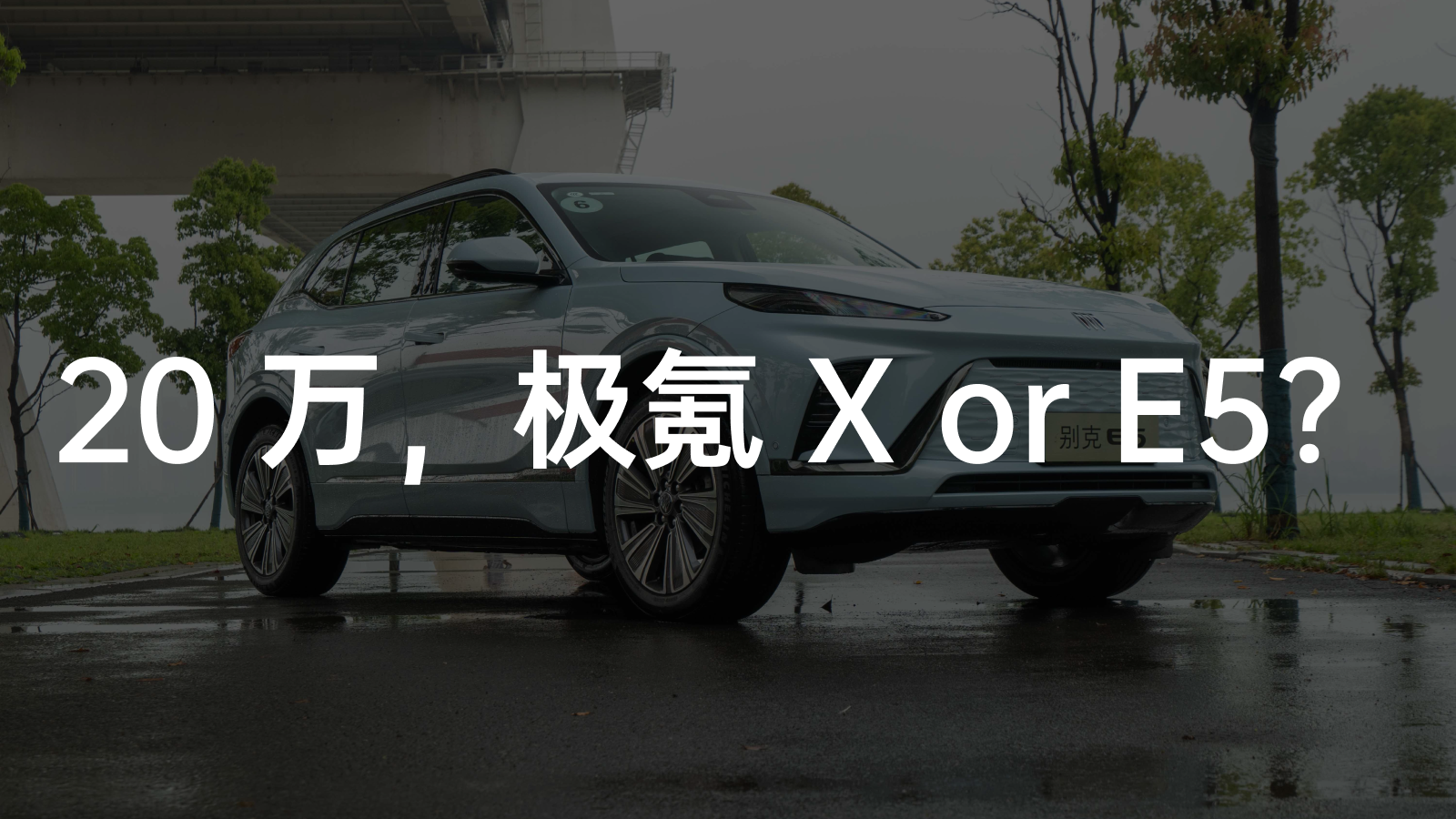On the night of April 12th, the entire car industry was boiling due to the pricing of the JiKe X, and everyone cheered:
“The JiKe X has such high cost performance!”
On April 13th, the Buick ELECTRA E5, which is positioned as a midsize SUV, was officially launched with a starting price of 208,900 yuan. I was at the Buick ELECTRA E5 launch event at the time and just as I was feeling groggy and sleepy, I was suddenly alert when I heard the pricing:
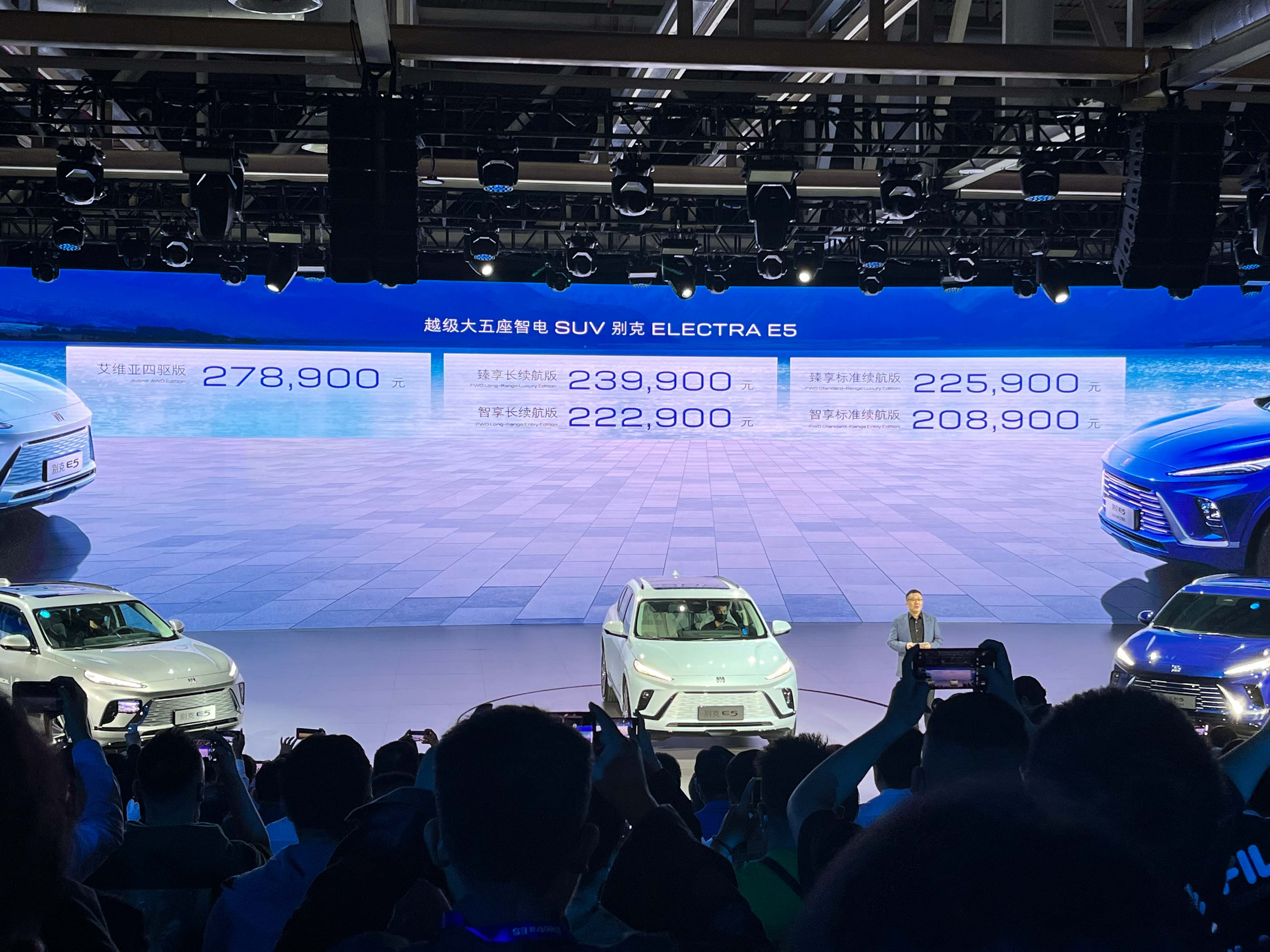
“Is this really a price that a joint venture car company can set?”
First, let’s take a look at the pricing and benefits of the different versions of the Buick ELECTRA E5. The Buick ELECTRA E5 comes in two battery pack specs, the standard range version with a 68 kWh battery pack and a CLTC range of 545 km, and the long range version with an 80 kWh battery pack and a CLTC range of 620 km. The all-wheel-drive model has a CLTC range of 603 km. The prices for each version are:
- Smart Standard Range: 208,900 yuan
- Luxury Standard Range: 225,900 yuan
- Smart Long Range: 222,900 yuan
- Luxury Long Range: 239,900 yuan
- Aviar AWD: 278,900 yuan
On April 12th, you could buy a JiKe X with a 66 kWh battery pack for just over 200,000 yuan. Just one day later on April 13th, you could even buy a midsize joint venture pure electric SUV at the same price. Of course, the target audience for the JiKe X and the Buick ELECTRA E5 are completely different, so this comparison is just to let everyone feel the impact of the E5 pricing.
If this is still not intuitive enough, let’s give a more relevant example: the Tang EV with a CLTC range of 600 km has a starting price of 282,800 yuan. The Tang EV, which upgraded from a gasoline car platform and is larger in length, width and height than the E5, has a wheelbase that is even 134 mm shorter than the E5’s.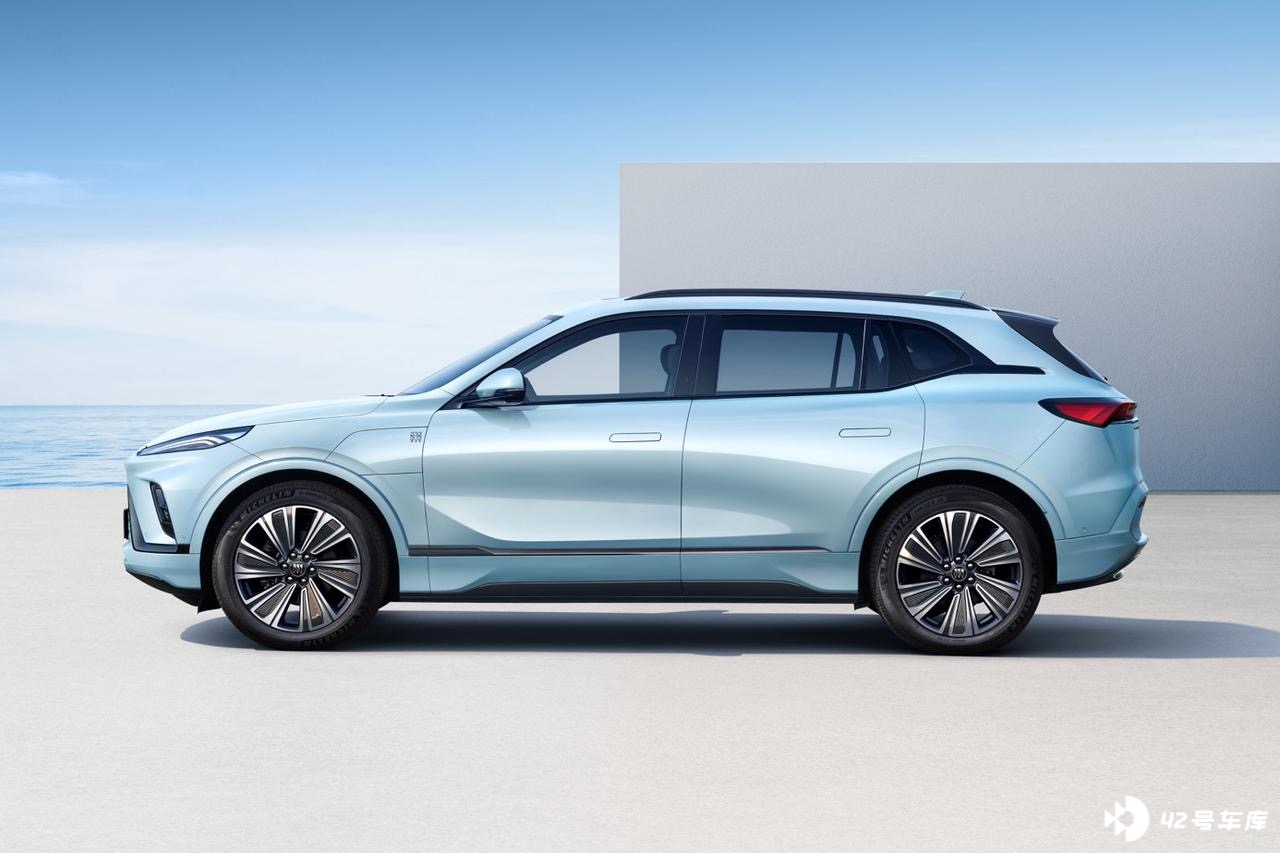
Therefore, we must seriously say that Buick’s ELECTRA E5 pricing may become a “turning point” for the pricing strategies of joint venture pure electric vehicles when looking back on this day in the future.
Turning Point in the Pricing Strategy of Joint Venture Pure Electric Vehicles
When it comes to pure electric products of joint venture brands, who can you think of?
From the market of 200,000-300,000 yuan, the “star products” of joint venture pure electric vehicles at this price range include Volkswagen’s ID. Family, Nissan’s Ariya, Honda’s C+Pod, and Toyota’s bZ4X.
Except for the ID. Family, the reason why the several pure electric products from Japanese brands have been highly praised is like a certain male star who has been practicing for two and a half years and has lot of fans – they all have their “black fans”.
Honda’s C+Pod, with its pure electric platform battery pack, has an overly prominent size; the length of the compact SUV is only 4,390 mm but the price is still around 200,000 yuan. Not to mention that the low-end model of C+Pod has a 53.6 kWh battery and a 420 km range under CLTC standard. This combination instantly takes everyone’s thoughts back to the electric vehicle subsidy fraud in 2020.
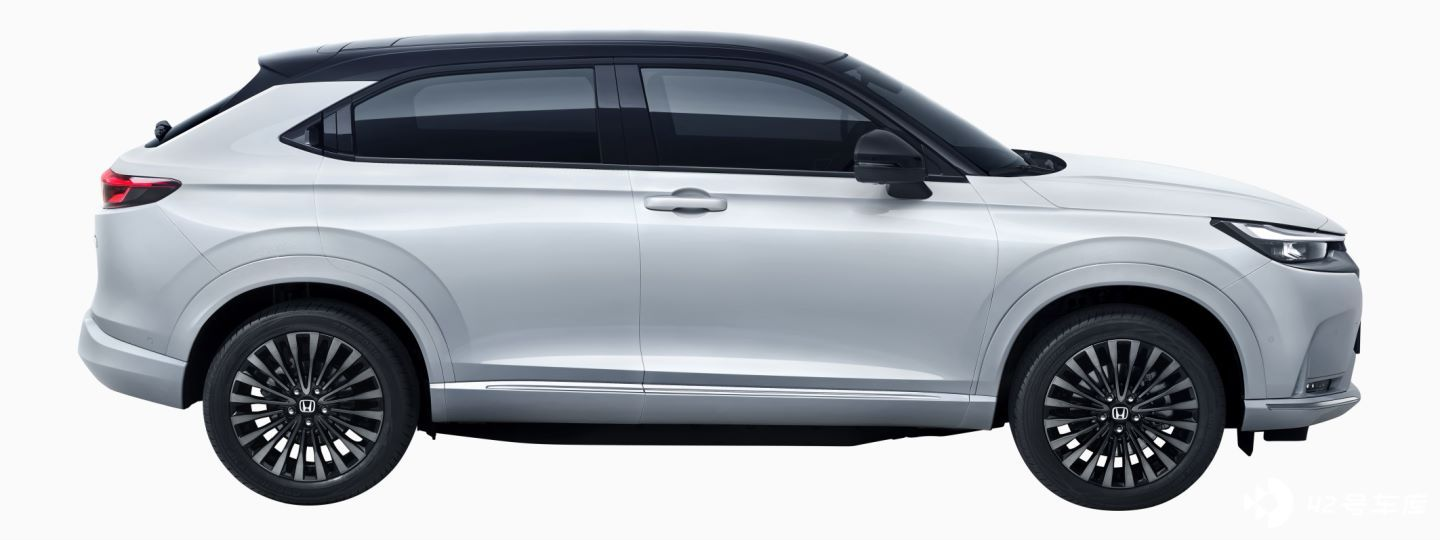
Toyota’s bZ4X, not to mention the peculiar design of the wing panel color plate, its maximum 66.7 kWh battery pack and bold official CLTC mileage of 615 km often results in real-world test results with 50% to 60% discount to the official claimed mileage. The 66.7 kWh two-wheel-drive version of the bZ4X is priced at 229,800 to 249,800 RMB. The official price and CLTC mileage are both bold.
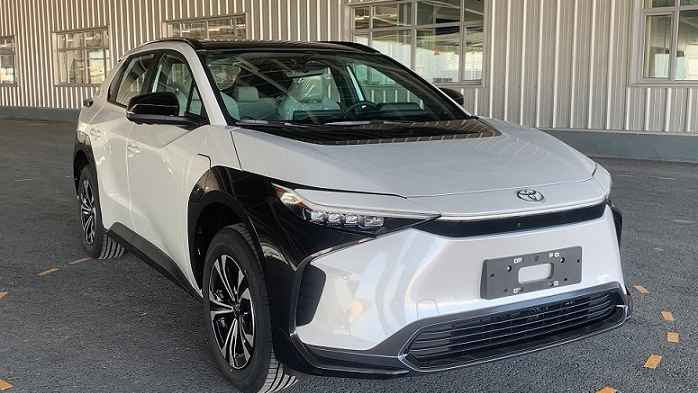
The most unfortunate is the Dongfeng Nissan Ariya. The product itself is good, but as a compact SUV, it had an exorbitant starting price of 284,800 RMB when it was just launched. Interested consumers were scared away immediately. By the time Nissan realized that there was huge inventory pressure from dealers and consumers didn’t really fall for the joint venture’s premium pricing tactics, it was already too late. They rushed to launch an official price drop of 60,000 RMB, but they had already missed the best window of opportunity.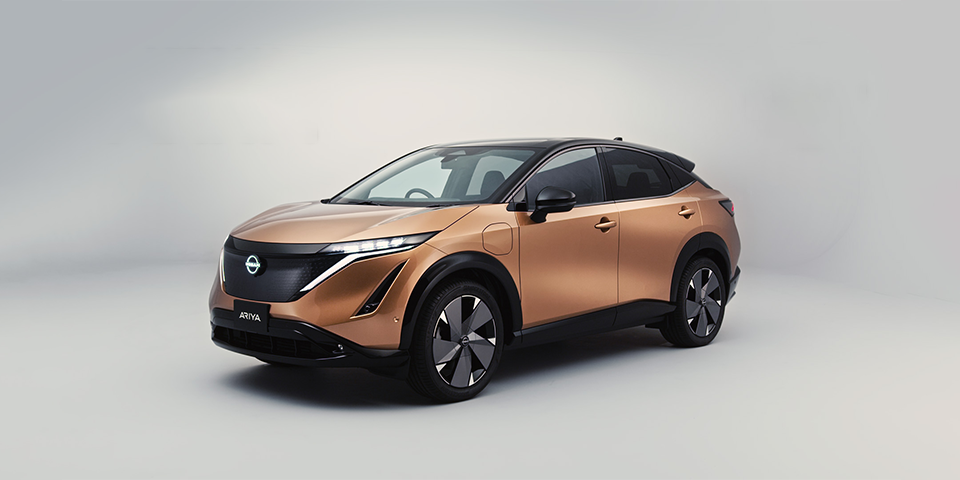
These cars have given me a preconceived notion of low expectations towards the Buick ELECTRA E5. In my opinion, most joint venture car companies lack a sense of crisis and are blindly confident. That’s also the reason why I was so surprised after the final selling price was announced.
So, let’s talk more in detail: why is the Buick ELECTRA E5 cost-effective?
The first, and most important point is: size. Let’s take a look at a comparison of data:
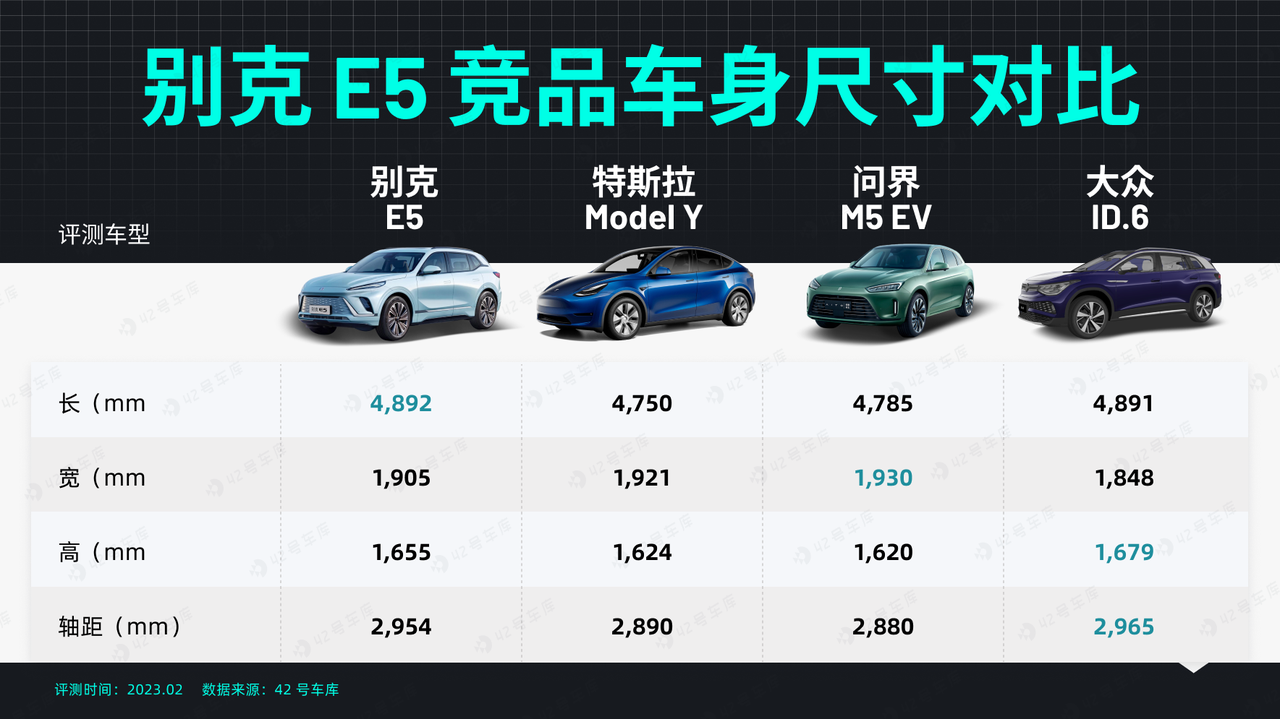
The Buick ELECTRA E5 is positioned as a mid-to-large-sized SUV, while the Model Y and WENJIE M5 EV in the table above are positioned as mid-sized SUVs. The Volkswagen ID.4, which we are familiar with, is positioned as a mid-to-large-sized SUV. Even when compared with the larger 6-seat mid-to-large-sized SUV Volkswagen ID.6, the Buick E5’s wheelbase is only 11mm shorter, which can be almost negligible.
Another benefit of the pure electric platform is that it can squeeze out more passenger cabin space within the existing size. The previous section also mentioned that although the Buick E5 is not superior to the BYD TANG EV in terms of body dimensions, it has a wheelbase that is 134 mm longer.
“In the era of electric cars, Buick adheres to the ‘more by 10%’ strategy (increasing the amount without increasing the price), and will also increase its core competitiveness in this way,” said Yao Fei, head of Buick’s marketing department at SAIC General Motors, in an interview after the press conference.
“For consumers who pay attention to practicality, passenger space, and riding experience at this price point, a spacious and comfortable passenger cabin is more attractive than a more technologically advanced interior and more intelligent driving assistance,” he added. “It’s not that cockpit intelligence and driving assistance are not important, but that everyone has different strengths and weaknesses in this price range, and consumers need to choose according to their own needs.”
The second point is strong energy consumption control. Although the Buick ELECTRA E5 only has a battery capacity of 68 kWh and 80 kWh, its actual nominal range is not low, as Buick has made a lot of effort in energy management.BEV HEAT, a dual-source thermal management system developed by Buick, can comprehensively manage the heat of air, battery, and electric drive systems. Its principle is similar to Tesla’s eight-fluid valve, combining heat pump air conditioning, electric motor heat, battery heat, and other systems into a circulation system to achieve excellent heating efficiency.
Interestingly, when the Buick ELECTRA E5 is charging in winter, it can preheat the liquid medium in the thermal management system in advance, so there’s no need to consume battery energy to heat the battery and use the air conditioning while driving. The saved electricity can increase the vehicle’s cruising range by nearly 10 km.
Thirdly, the technology of the Ultium platform is incredibly reliable.
Buick introduced nearly 20 minutes of battery safety during a one-hour press conference. The battery pack carried by the Buick ELECTRA E5 has undergone safety tests such as needle piercing, compression, and immersion far exceeding industry and national standards. In terms of architecture, the gas gel between the battery cells can block thermal conductivity when a thermal runaway occurs. The battery casing uses a super-strong steel structure to optimize the battery’s anti-collision performance.
This is also a part that cannot be easily experienced by consumers on the user end. As a traditional automaker, there’s naturally no need to worry about the performance of hardware tuning and safety.
That’s its advantage.
Not Smart Enough, But Practical Enough
Having understood where the pricing and cost-effectiveness of the Buick ELECTRA E5 lie, we still need to return to the product itself. We also had a static experience of the Buick ELECTRA E5 for the first time before the press conference. If we were to summarize the product characteristics of the Buick ELECTRA E5 with eight words, we would say:
“Not smart enough, but practical enough.”
In terms of appearance, the Buick E5 does not clearly establish a pure electric product branch like the ID. series, nor has it established a new brand to make new energy products. Regarding this, Yao Fei, the head of Buick’s marketing department at SAIC-GM, said:> Buick ELECTRA E5 does not adopt a brand new sequence like ID. series, but everything from product to marketing is geared towards a pure electric sequence. Buick hopes to build a good experience for these end terminals.
From the appearance, we can also see that as a pure electric vehicle, Buick ELECTRA E5 has unique design details, but overall it does not have a particularly large difference with fuel products.
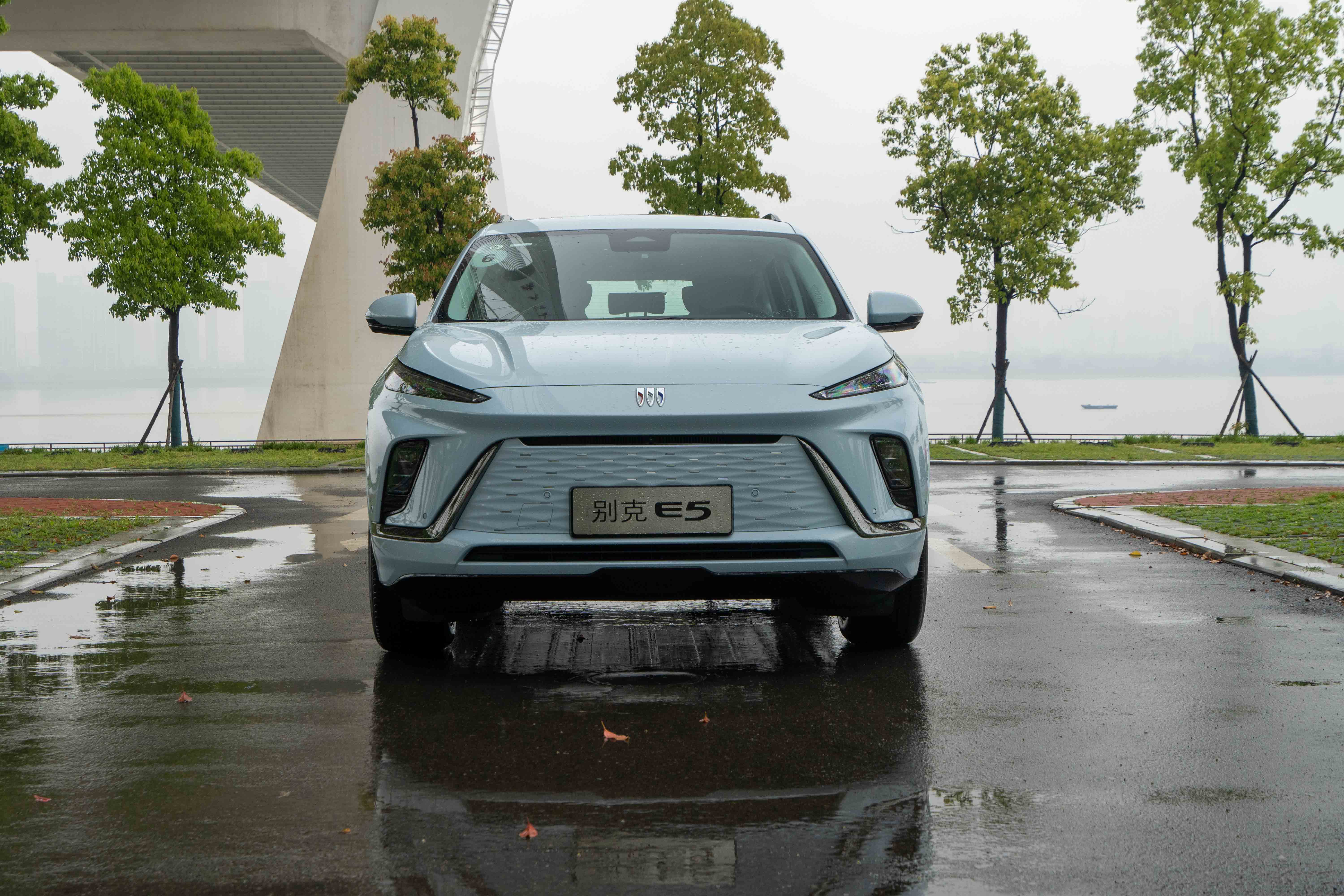
The front face of Buick ELECTRA E5 is equipped with Buick’s brand-new three-color shield logo design. In addition to the blue body paint, the grille with the same color as the front face and body may be the biggest symbol of the new energy identity. The LED headlights on both sides of the front of the car can provide a flowing light and dynamic matrix language, and we can also see similar designs on the Regal.
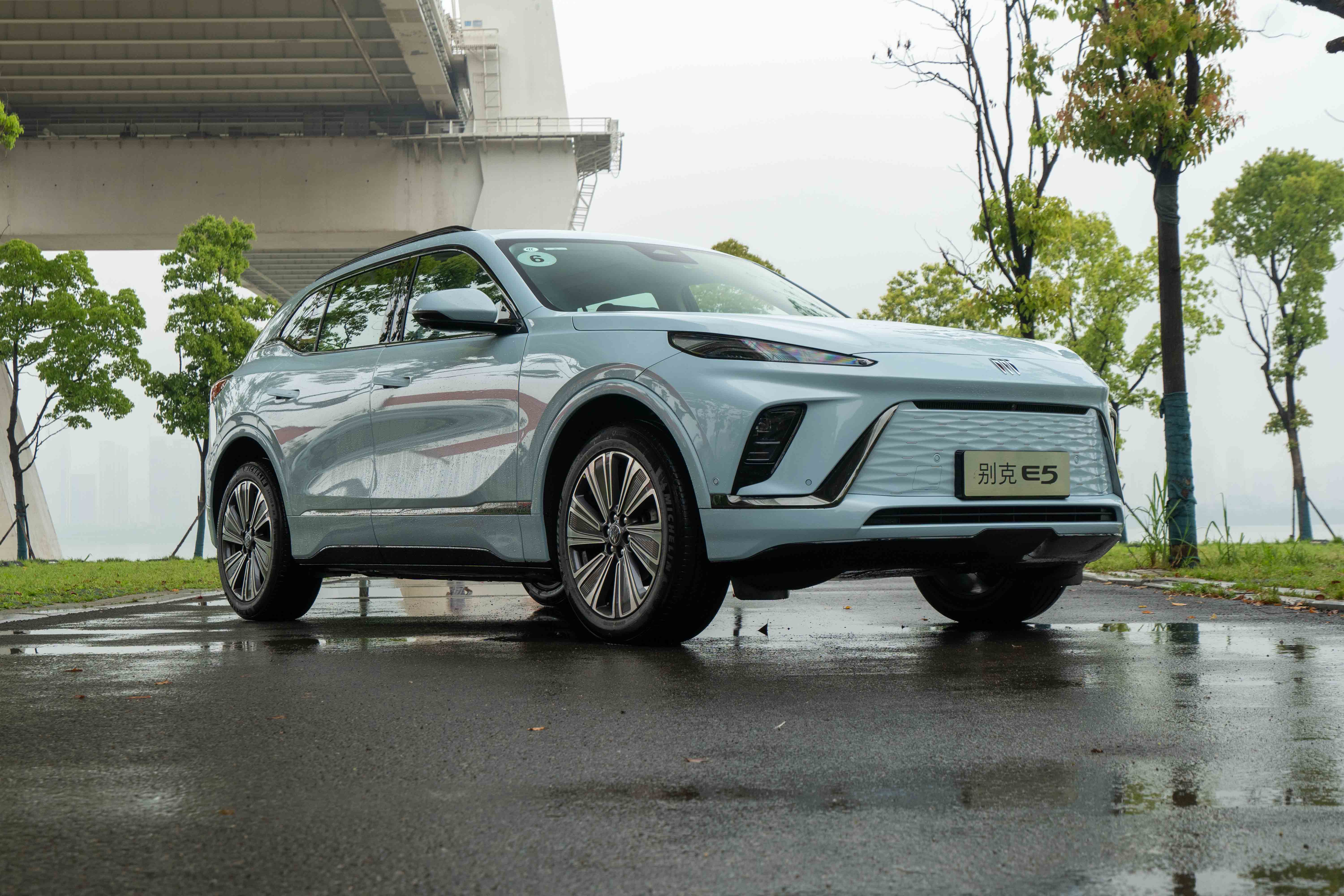

The side of the car maintains Buick’s consistent “solid” style, and some curved convex and concave intersecting details are added to form a contrast between light and dark. Although the wheelbase reaches 2,954mm, the overall sense of massiveness is not so “oversized”. This visual experience is also because Buick ELECTRA E5 adopts a short front and rear overhang design.
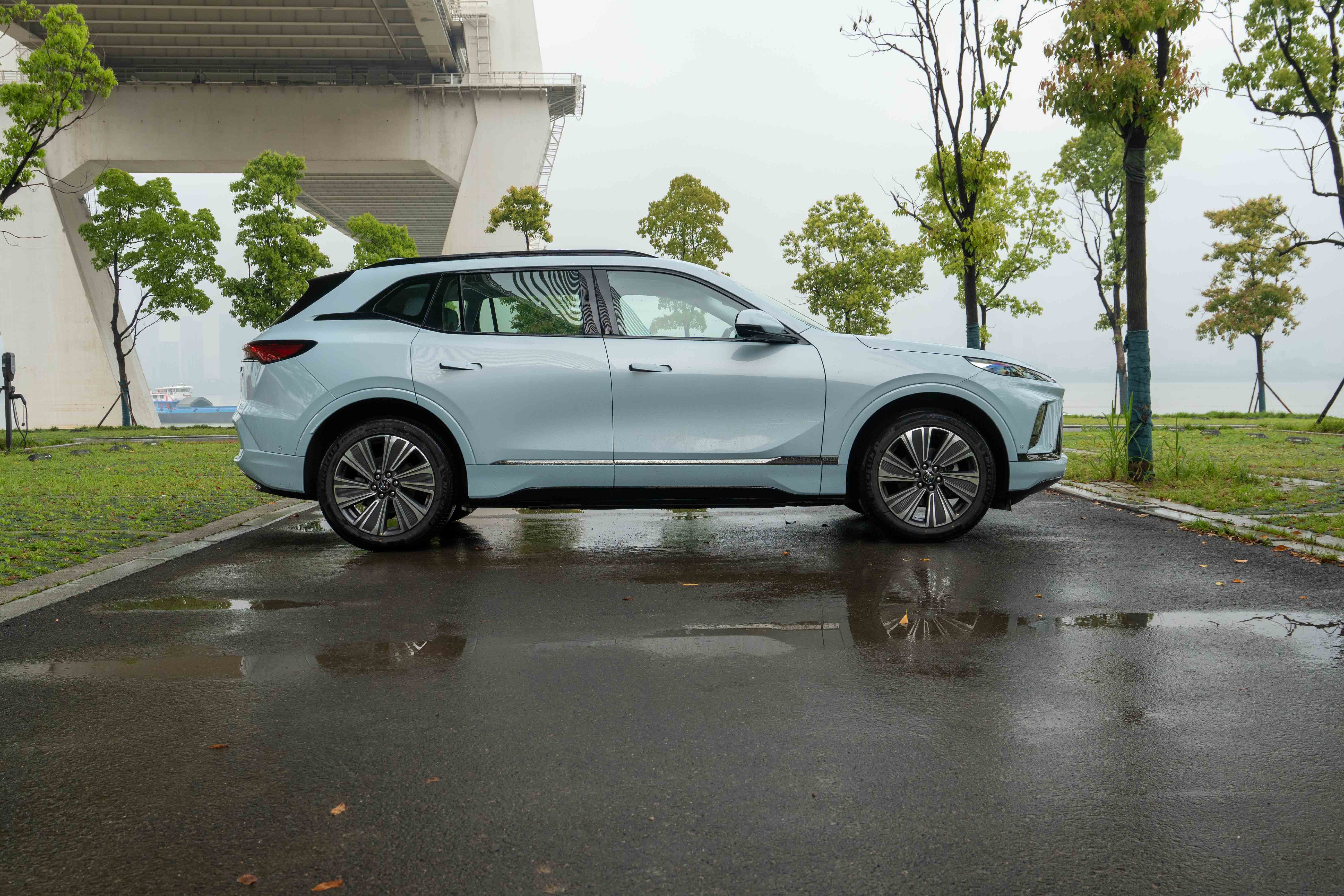
At the rear, the E5 has a continuous-style wing-shaped taillight that is longer and flatter, which expands the visual width of the rear of the car and echoes the headlights. The high-level brake light of the crystal shield at the rear also echoes with the brand-new Buick logo. Without particularly bold and eye-catching designs, “plain and unpretentious” and “solid and heavy” are the best annotations for the exterior design of Buick ELECTRA E5.
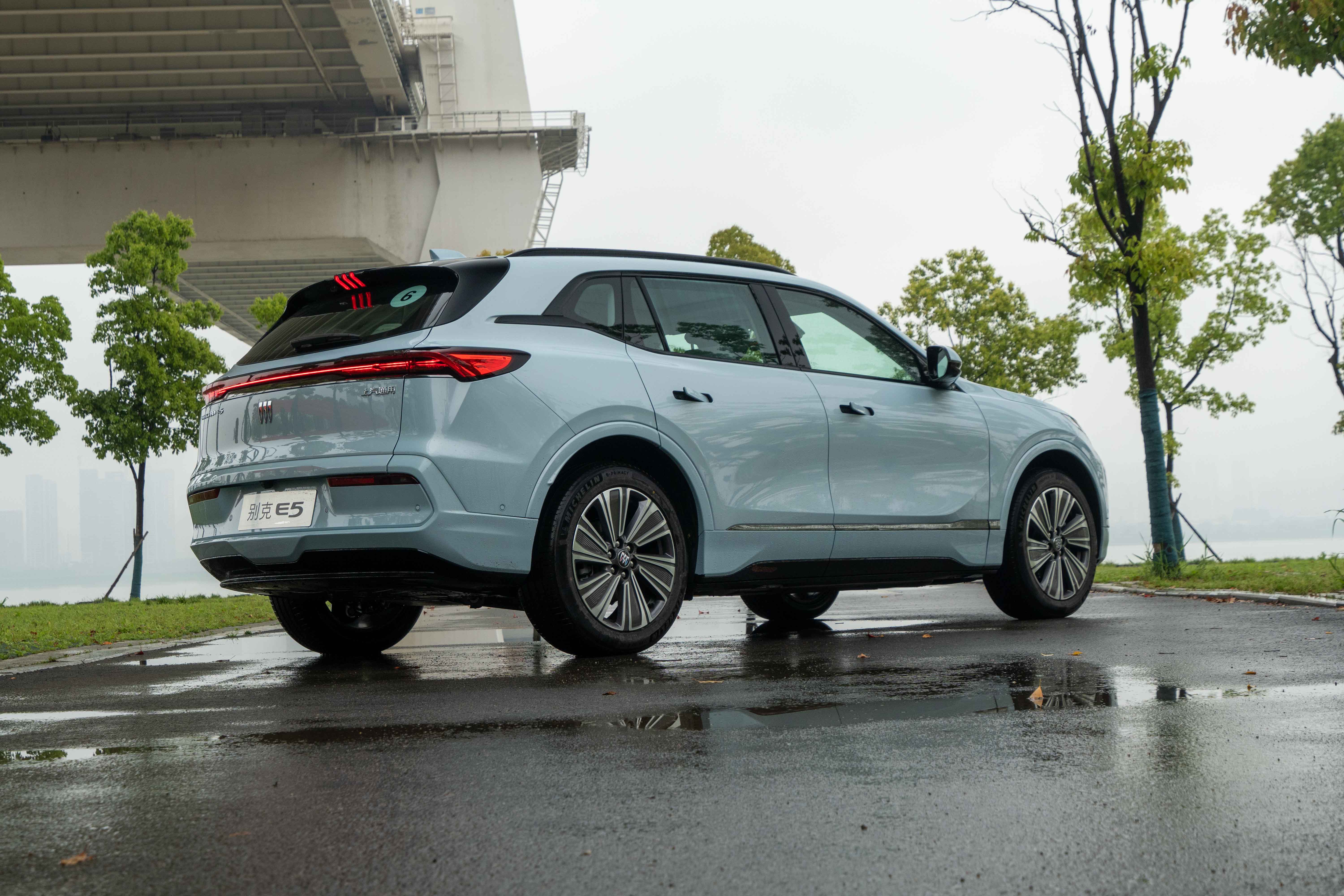
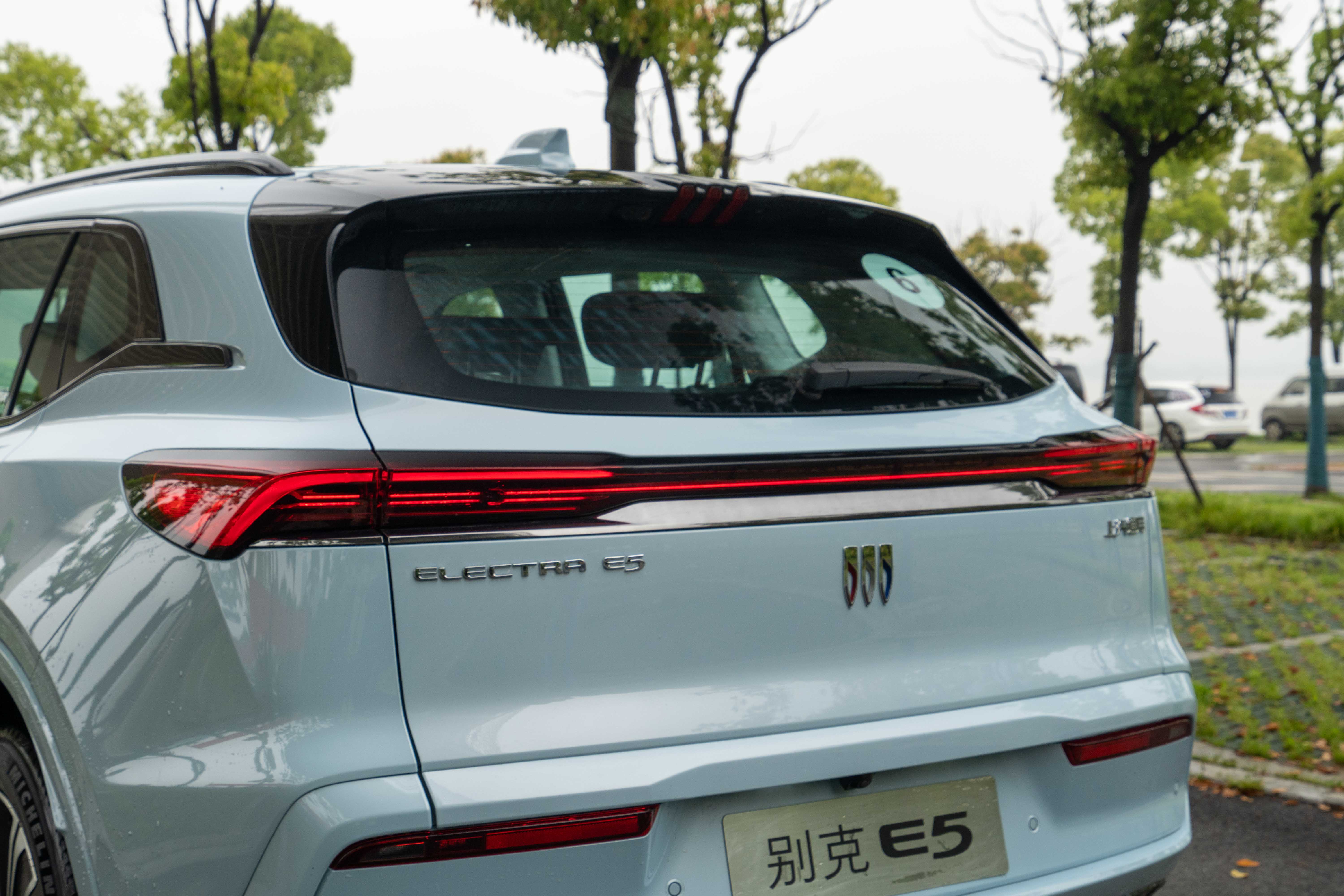
Despite Buick spending a lot of time introducing its intelligent cockpit and assisted driving during the press conference, the Buick ELECTRA E5 is still not outstanding in this respect, just like most traditional automakers’ new energy vehicles. However, traditional automakers’ advantages lie more in mature driving feel tuning, excellent energy consumption control and better human-machine engineering design. We are not surprised by this kind of performance in the intelligent part.
Intelligent, but not abundant
Let’s start with the intelligent cockpit. The most eye-catching part of the Buick ELECTRA E5’s interior is the 30-inch integrated curved 6K screen, which is almost the same as the curved screen on the Roewe RX5, but upside down, and the electronic gear selector is also just like that of the Roewe RX5.
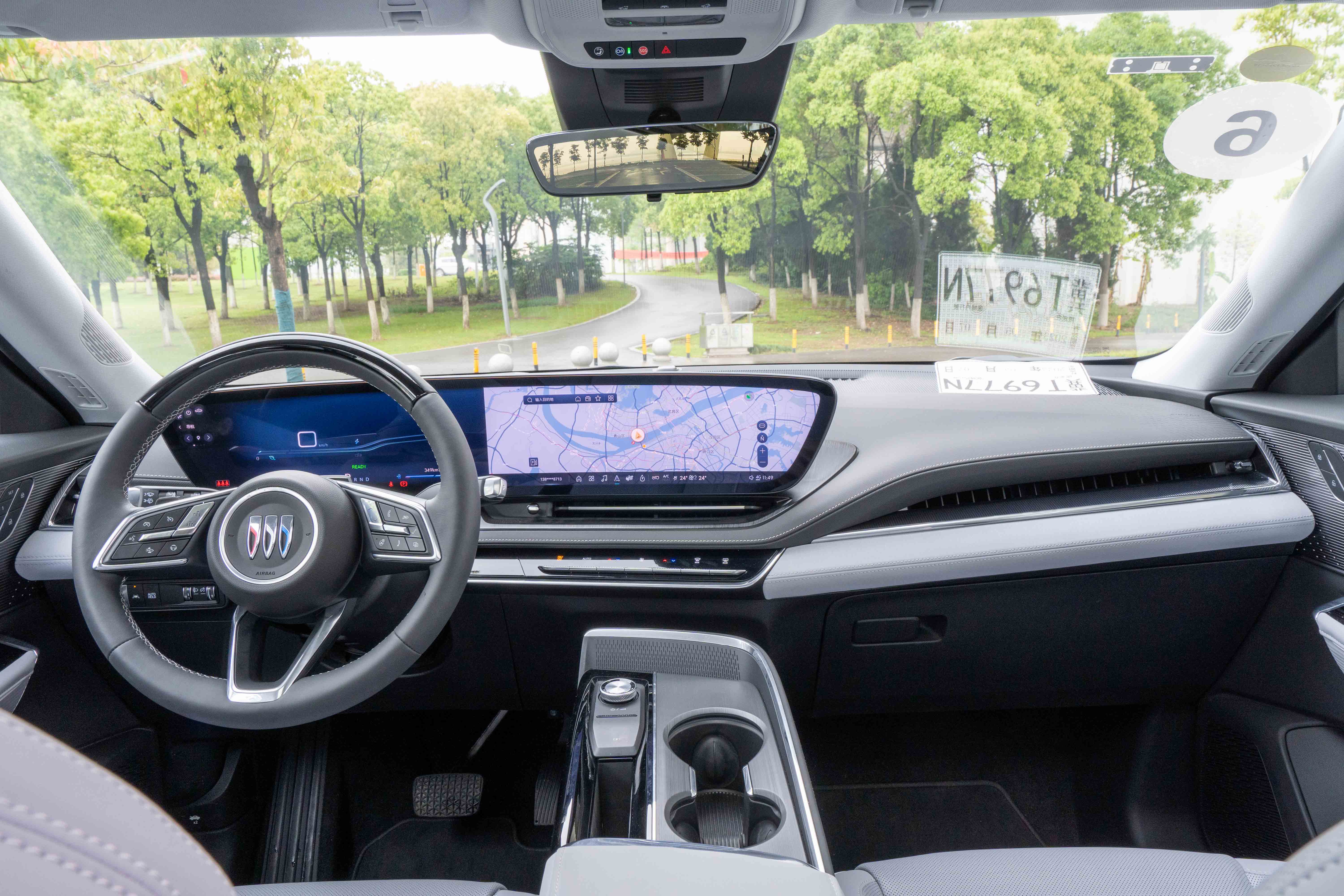
Although it is an LCD screen, the overall viewing experience from the side is pretty good because of its large size. The reason why we emphasize “viewed from the side” is that once you sit in the driver’s seat, the steering wheel will block a large part of the display area. Although the designer tried to avoid the blocked area as much as possible, there is no “transparent feeling” brought by the 30-inch integrated curved screen in terms of visual perception.
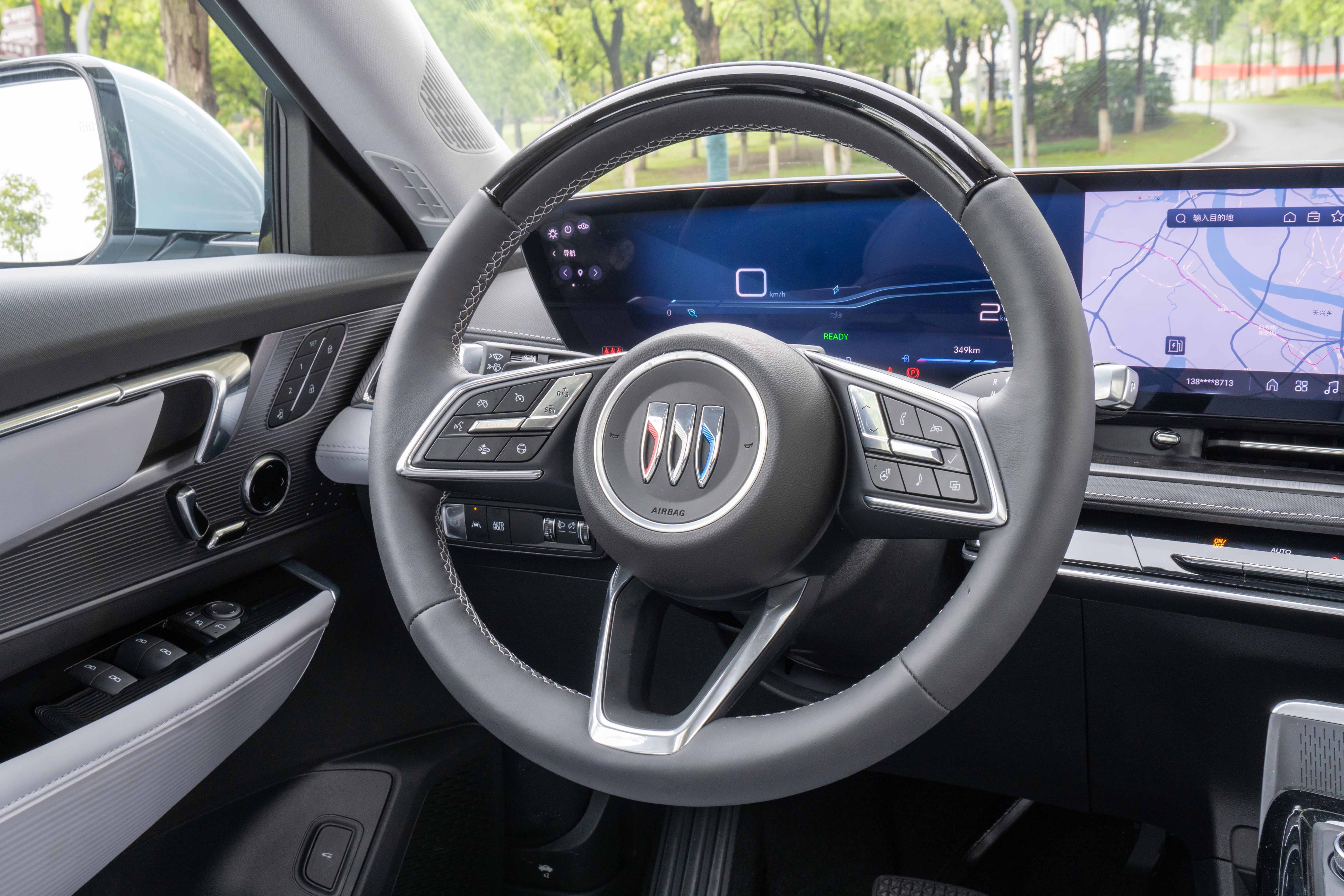
There is still plenty of room for improvement in terms of operation logic for the ELECTRA E5. For example, although the main interface has small cards for frequently used functions, the most important Carplay card does not appear on the main interface, so you still need to search for it in the menu if you want to use Carplay.
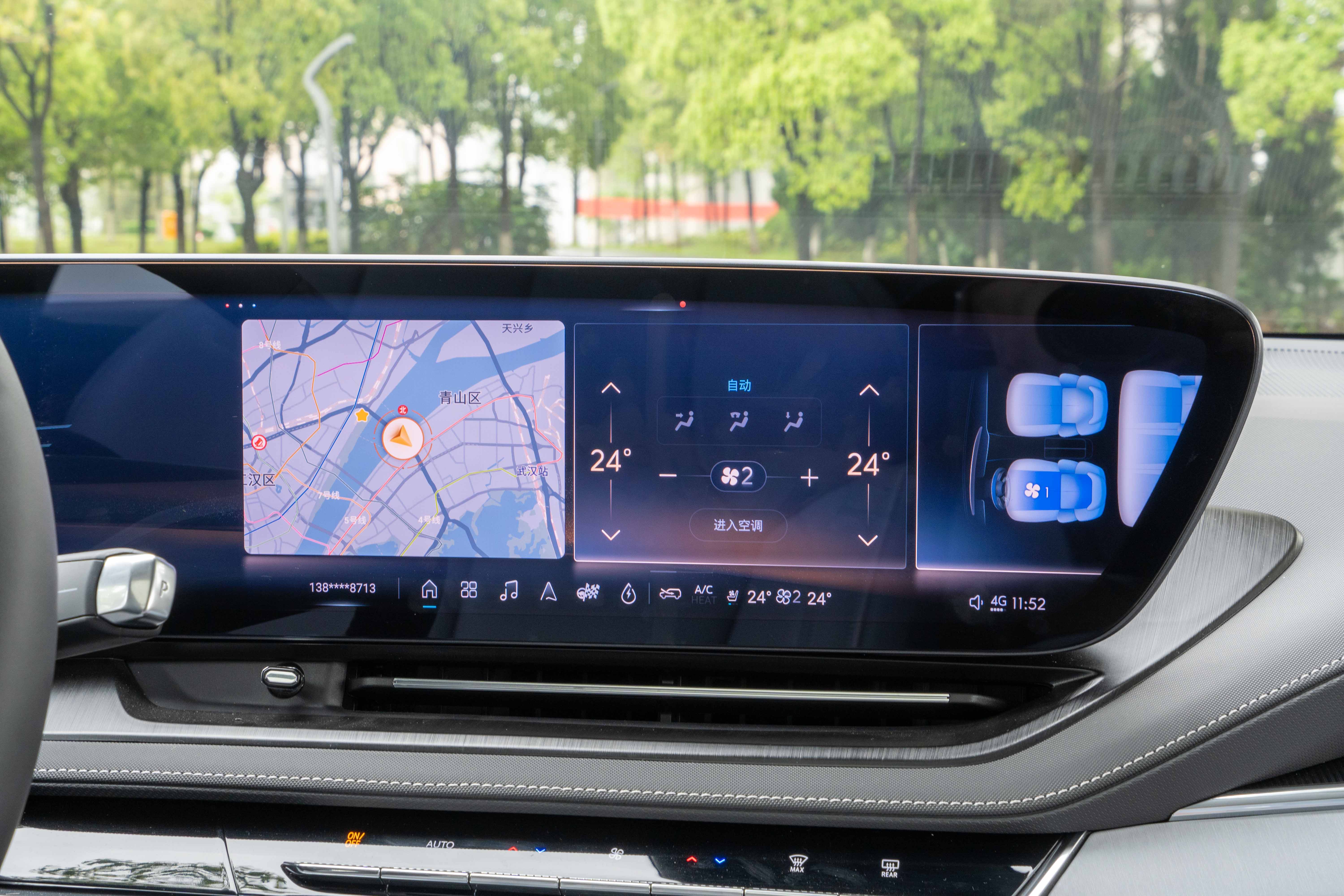
In addition, some adjustments for complex functions still require some effort to figure out: for example, you can see two options: “Vehicle” and “Vehicle Control” in the menu, which is confusing.
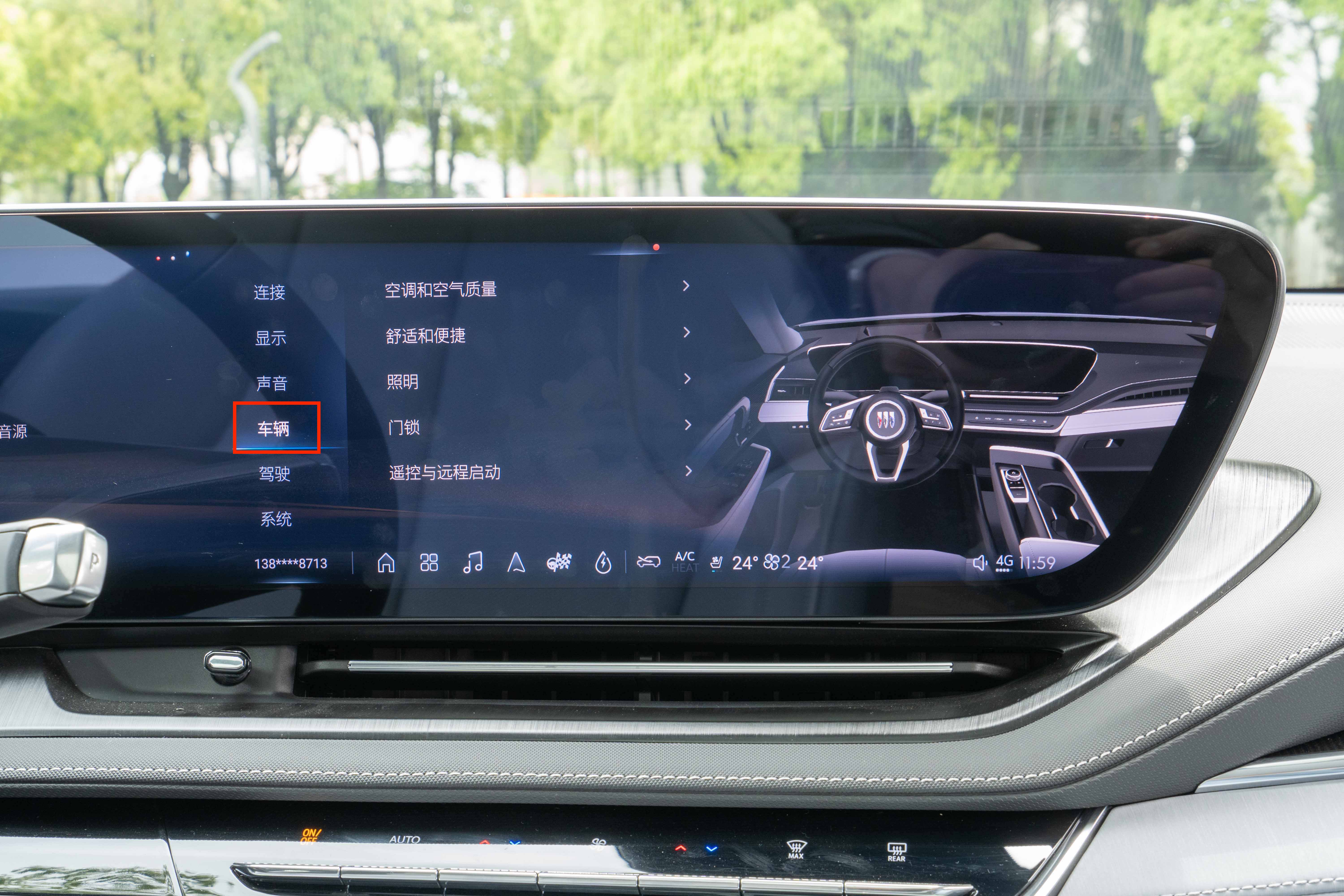
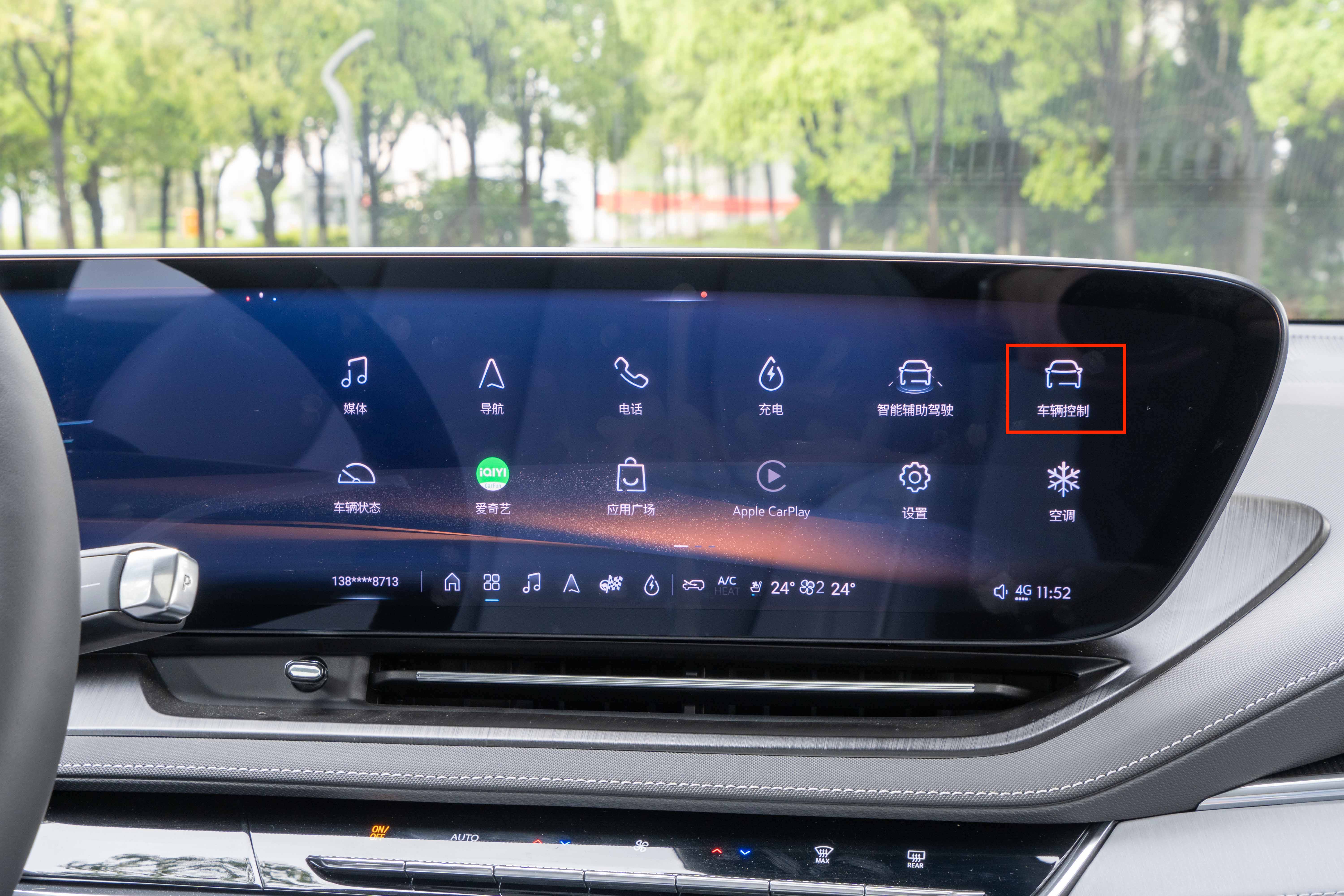
In addition, the inability to choose the background for the car’s display interface is the most frustrating aspect. The gray-blue color magnifies the disadvantages of the LCD screen. I would hope that a light-themed car display wallpaper will be released in the future.
The Snapdragon 8155 chip is currently mainstream, but the Buick ELECTRA E5’s embedded third-party applications are not abundant. Fortunately, the car display supports wired/wireless Carplay which can make up for some of the shortcomings.
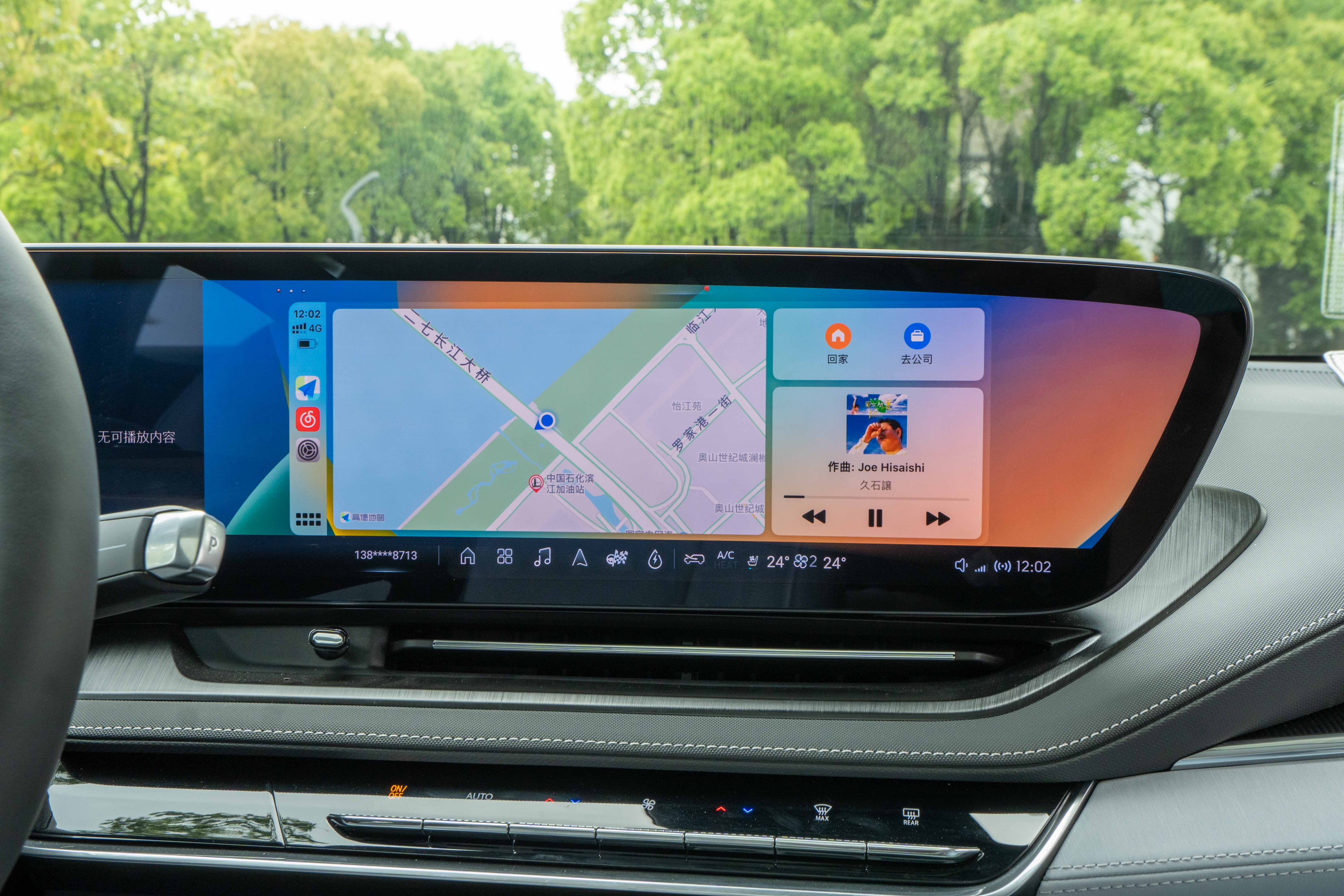
However, despite criticisms, the Buick ELECTRA E5’s intelligent car system is much better than that of the Volkswagen ID. series. E5’s voice system can also meet basic needs such as opening and closing windows/skylights and adjusting air conditioning.
Furthermore, the 12.6-inch HUD display system has clear enough visuals, but it is regrettable that it cannot be used in conjunction with Carplay to display navigation information. This wastes the most practical scenario for the HUD.
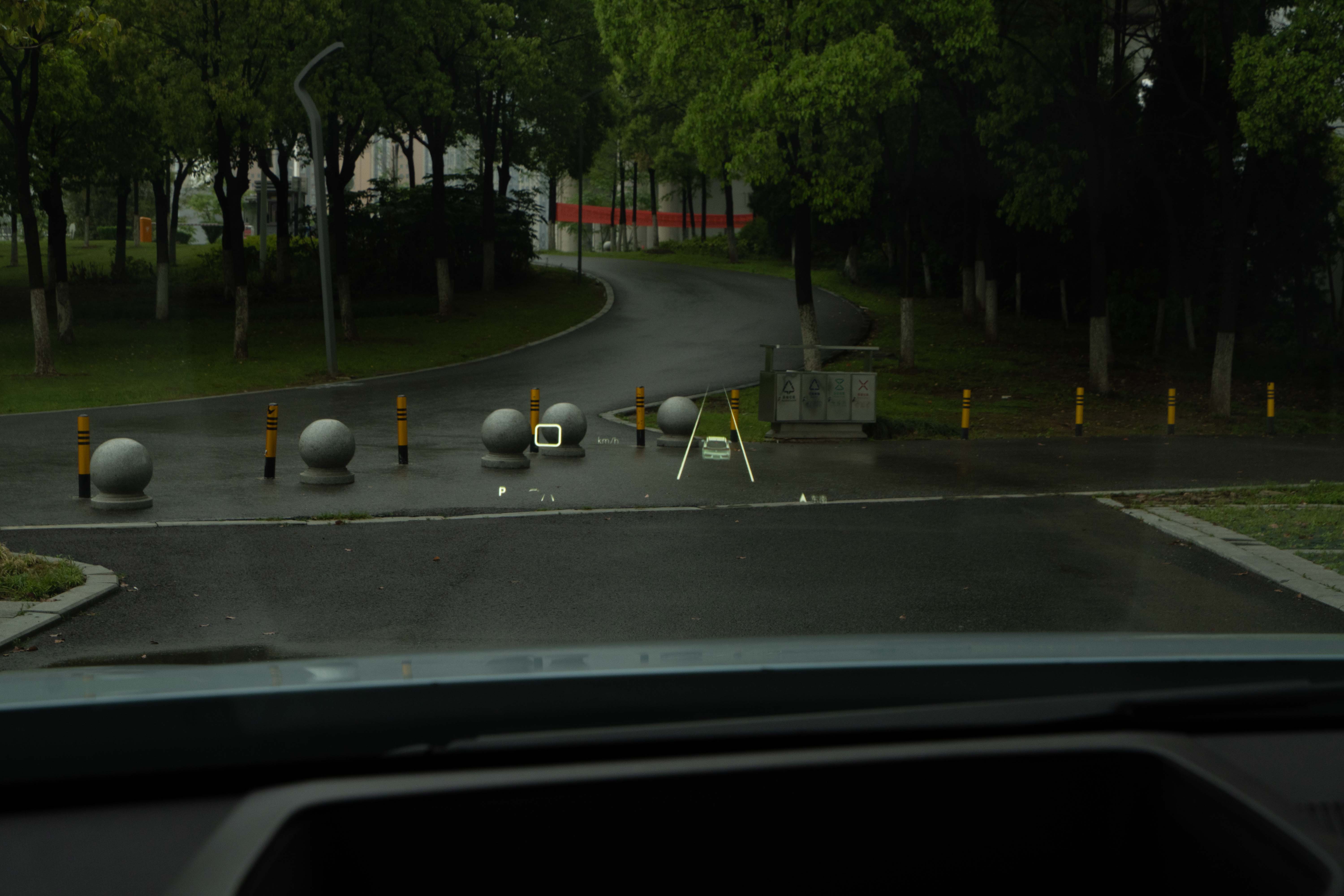
As for the “Decor Light Dance Crystal Array Decorative Panel” and “121-color music dynamic atmosphere lamp” on the center console, while these functions have a good starting point, their effects are almost invisible during the daytime, and we have not experienced them at night, so it is difficult to come to a conclusion.
On the topic of assisted driving, it is “better than nothing”. The basic L2 assisted driving system, HOLCA, can actively keep the car in the center of the lane within a driving speed range of 0-80 km/h. It performs well at this speed, but it also means that users who have not chosen Super Cruise do not have the use of a lane-keeping feature at high speeds.
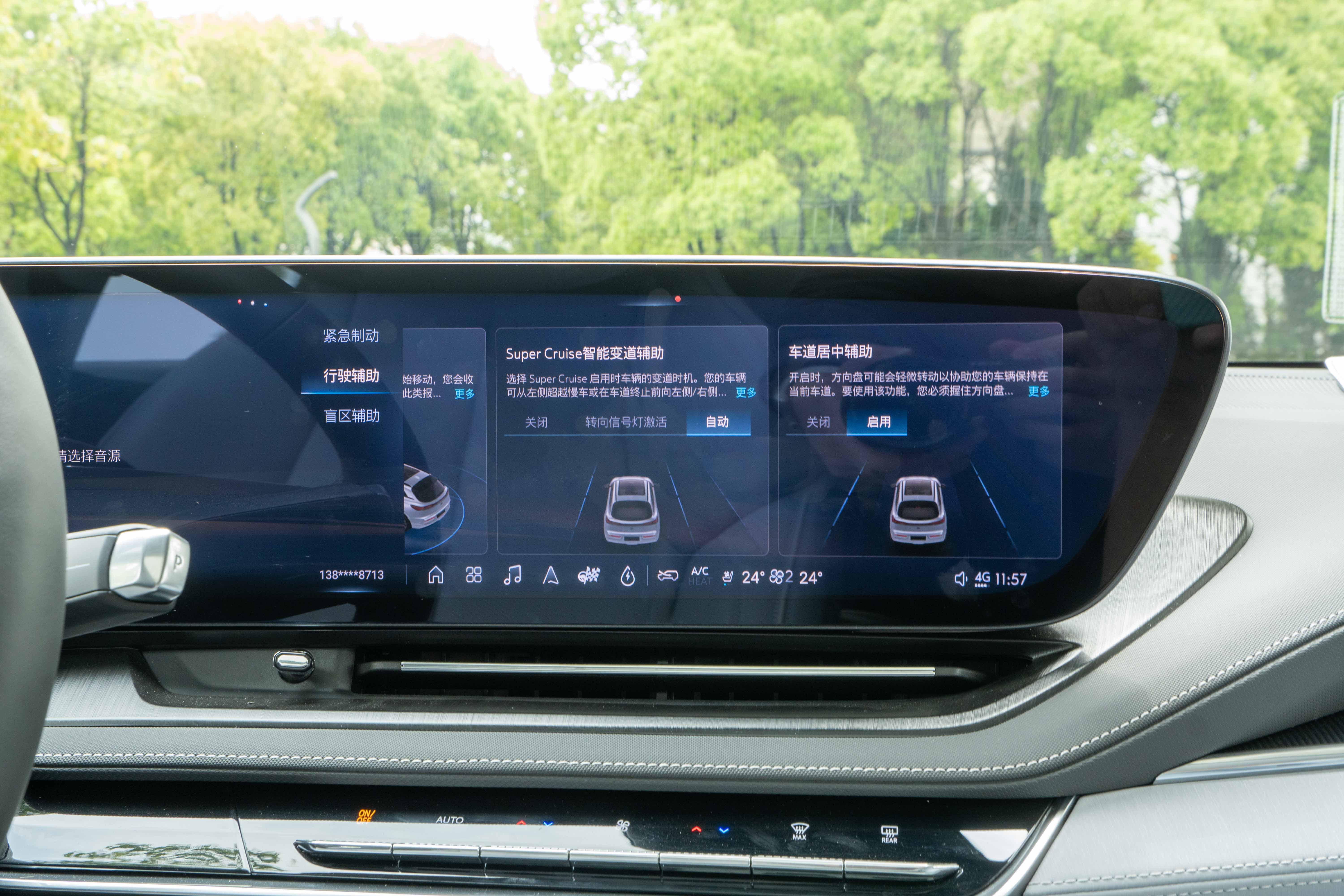
Even if you choose Super Cruise, Buick official statements indicate that it won’t be open for use until mid-year. Based on my previous experience using Cadillac Super Cruise, the system relies on high-precision maps, and currently, the map information outside of Shanghai is not abundant, and the Super Cruise visualization is almost non-existent. Although the visualization of the ID. series assisted driving resembles a lagging PPT, at least it exists.For consumers who are experiencing assisted driving for the first time, a lack of visual representation can cause significant psychological pressure. Therefore, from this perspective, it is not particularly regrettable that the entry-level models of the ELECTRA E5 standard and long-endurance versions are not equipped with Super Cruise.
Moreover, except for the few removed features such as automatic parking, a 360-degree panoramic image, 121-color breathing atmosphere lights, punched leather seats (entry-level models are a mix of fabric and leather), four-way lumbar support, and ventilated seats, the ELECTRA E5 standard and long-endurance entry-level models have almost all the same features as the entire series, and are not considered “beggarly.”
Leading a Steady Life
After criticizing the intelligence of ELECTRA E5, let’s give credit where it’s due. As a mid-size SUV that may need to shoulder the duty of a household’s main vehicle, the most crucial points are seat comfort, space, and expandability.
ELECTRA E5 has performed quite well in these aspects. First of all, the leather is delicate and the filling is soft, and the overall feel of the seats is very similar to that of a large sofa. The suspended headrests have side ear support and are comfortable enough.
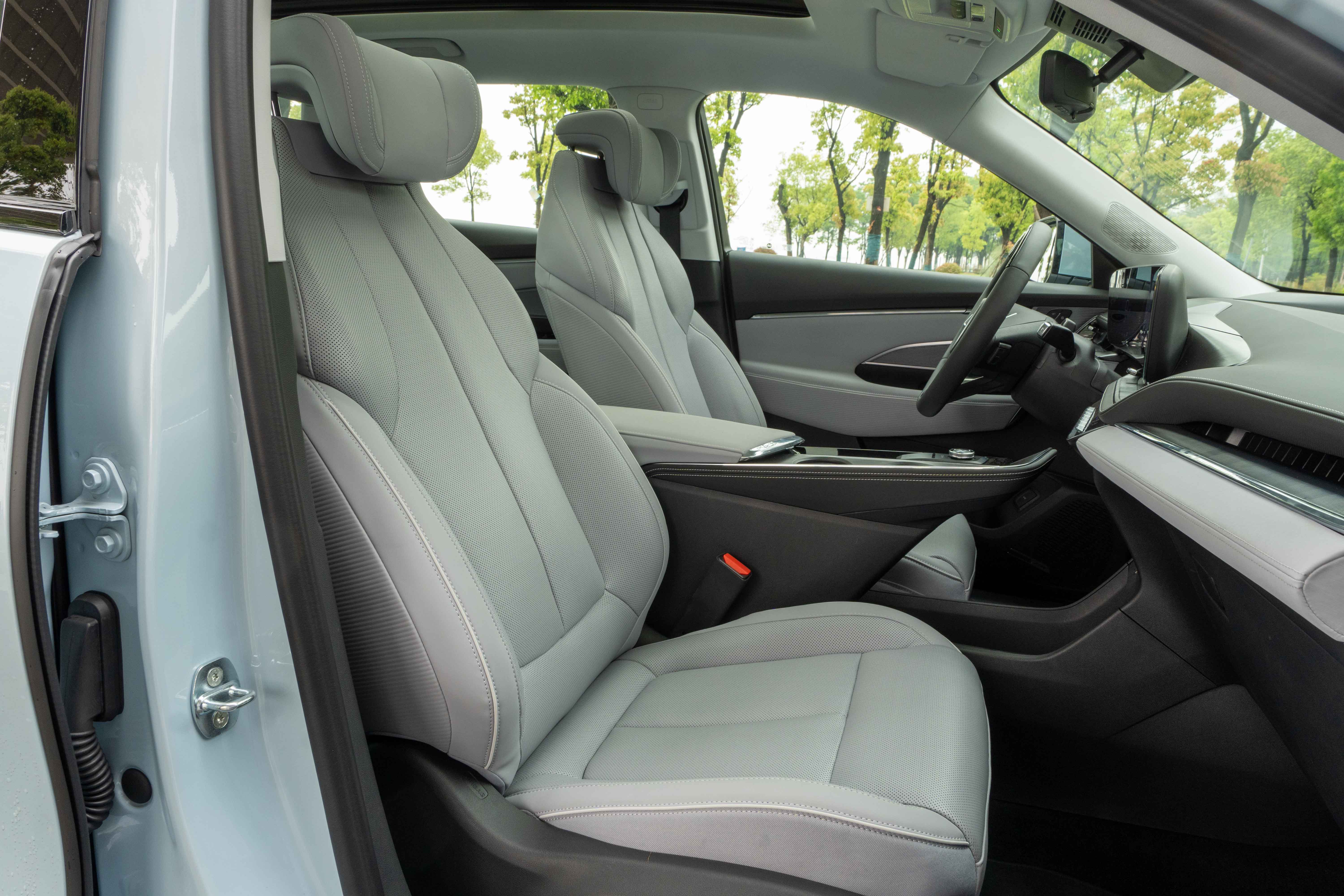
The armrest box is a suspended central island similar to that of Ruijie, with a unique style and an increase in storage space to some extent.
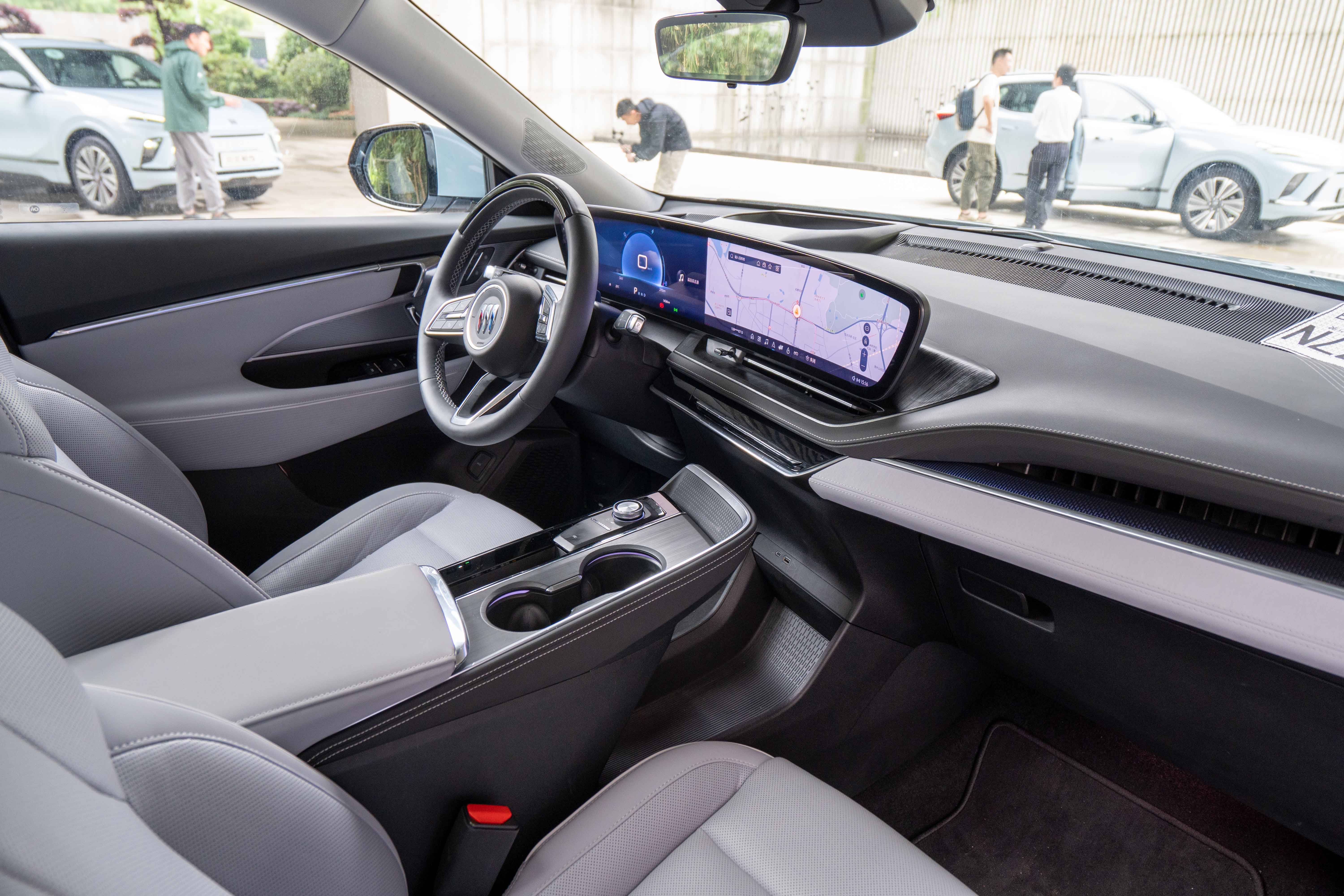
The rear space is the most surprising feature of the ELECTRA E5 for me. With a wheelbase close to 3 meters but a layout of a large five-seater, I, who is 175 cm tall, still have more than three fists of legroom in the rear seats.

The rear seats are as thick and soft as the front, and the low platform can comfortably support the calves, while the feet can be placed in the gap of the front seat floor.
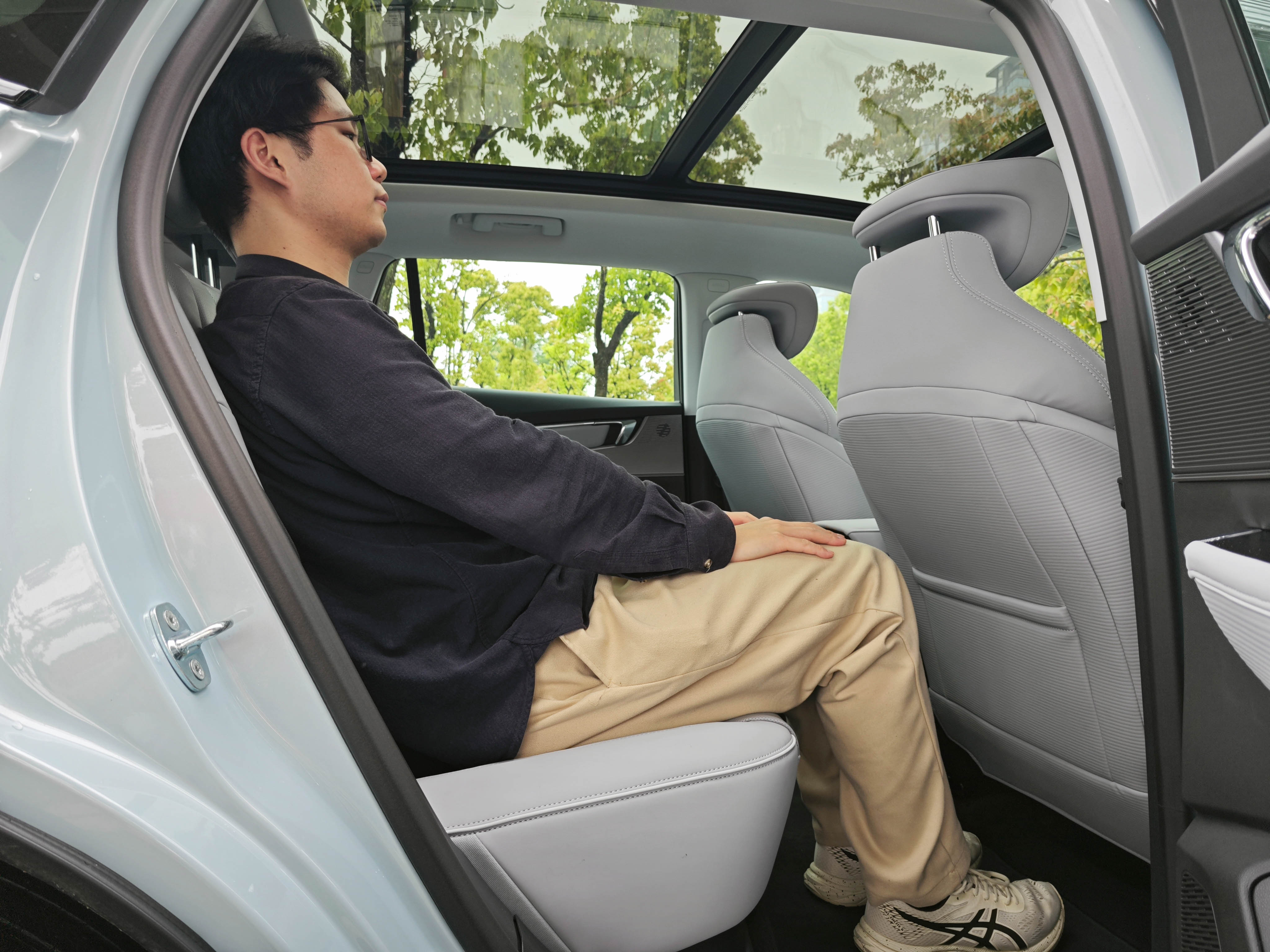 In terms of space expandability, pure electric platform has significant advantages. The ELECTRA E5 has a trunk volume of 502-1,658 L, and there is also a considerable storage area after lifting the trunk cover.
In terms of space expandability, pure electric platform has significant advantages. The ELECTRA E5 has a trunk volume of 502-1,658 L, and there is also a considerable storage area after lifting the trunk cover.
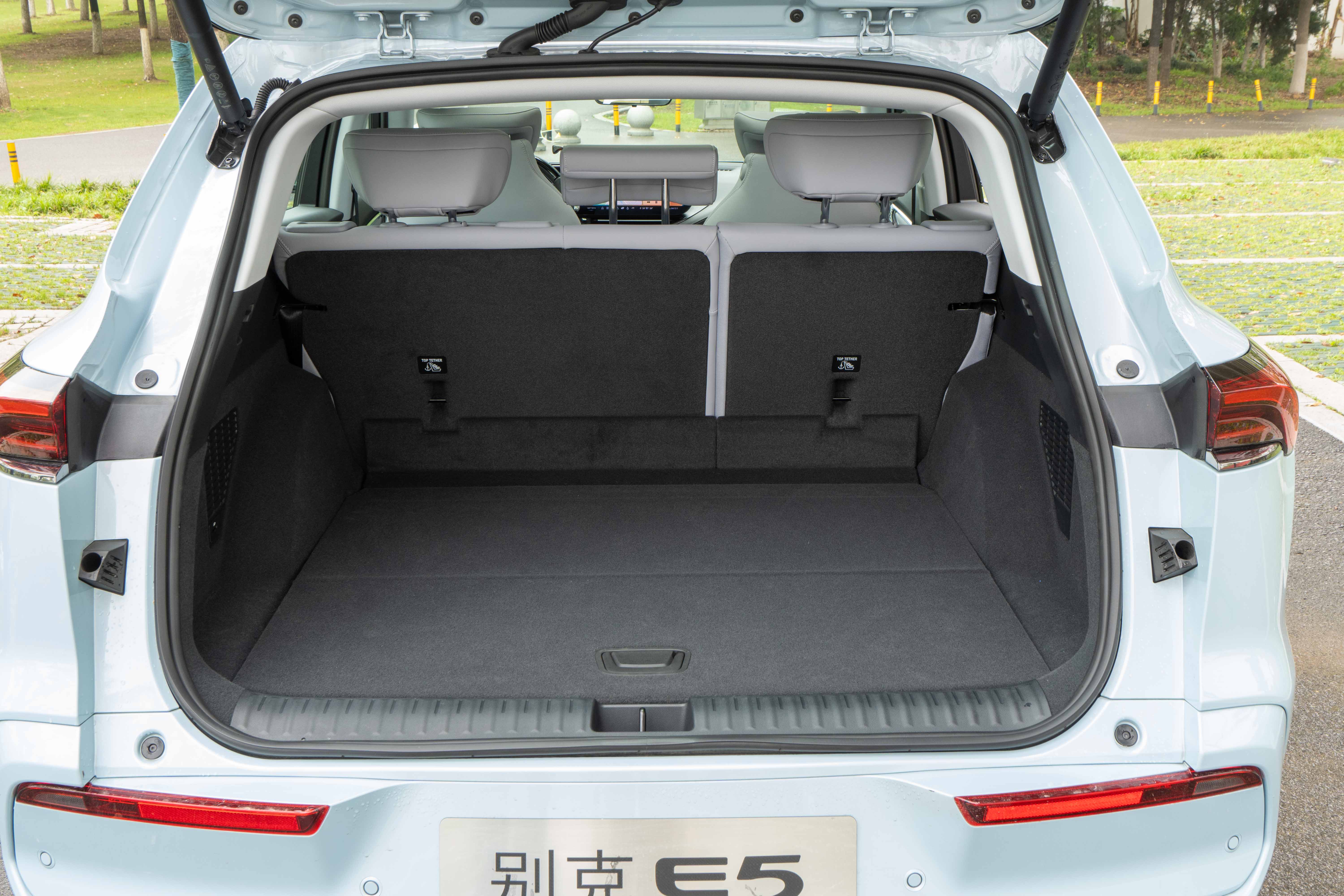

The rear seats of the ELECTRA E5 support 4/6 folding, and the space after folding is very regular. I, who is 175 cm tall, also lay down to give you a demonstration, and you can feel the space by looking at the picture. The only regret is that there is still a small curvature between the rear seats of the ELECTRA E5 and the trunk after folding. Car owners who have camping needs need to use special cushions to level it.

In terms of NVH optimization, the ELECTRA E5 still uses Buick’s “library silent technology”. The front car windows are made of double-layer laminated glass, and Buick also uses acoustic wrapping technology for the motor. The Regal, also on the Altenergy platform, is quite impressive in NVH control, and we are also looking forward to the actual performance of Buick ELECTRA E5.
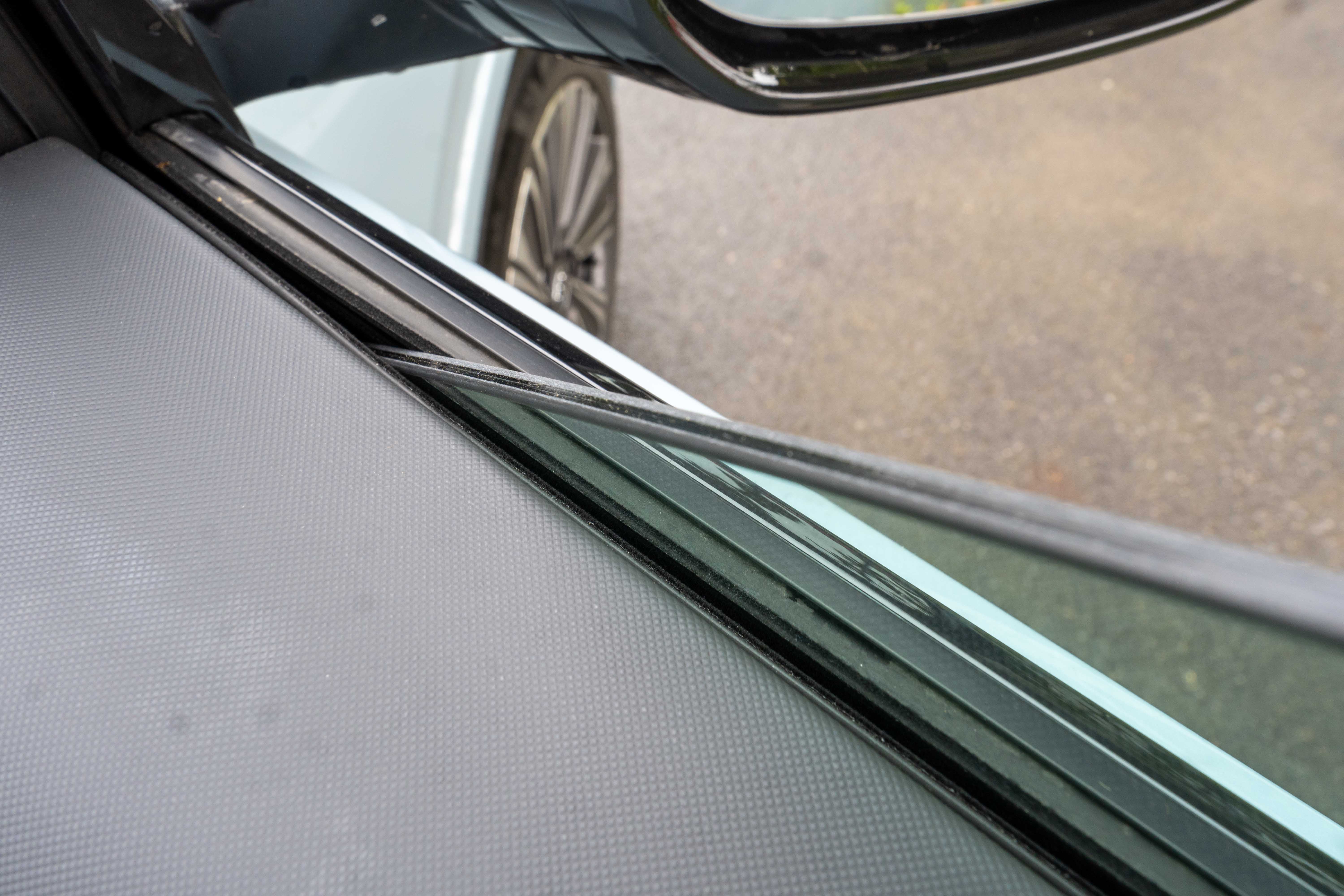
In terms of power system, the power parameters of Buick ELECTRA E5 front-wheel drive models are: 180 kW/330 N·m, 150 kW/330 N.m. Regarding why the electric motor power of models with smaller batteries is greater, we also asked Thank you, deputy director of Buick brand:
The motor for standard and extended batteries is the same, and the torque parameters are exactly the same. However, affected by the battery pack, there will be differences in the voltage output platform, so trade-offs are made in terms of power. But after internal testing, it was found that the 180 kW maximum power of the 68 kWh standard range and the 150 kW maximum power of the 80 kWh extended range have little difference in the final experience.The words say that the official 0-100 km/h acceleration time is 7.6 seconds, and the long-term continuation is 8.6 seconds, which still lags behind by one second. In the era of single-motor cars easily reaching 5 seconds, even the acceleration level of 7.6 seconds is not outstanding.
However, it is interesting that few ID. car owners in the office complain about their cars’ only 8-second-level acceleration.
The four-wheel-drive model of the Buick ELECTRA E5 has a maximum power of 211 kW and a maximum torque of 465 N·m. Its 0-100 km/h acceleration time is 6.7 seconds, which is not considered remarkable either.
However, according to the tuning habits of JV brand pure electric models in the chassis calibration, pedal calibration, and driving experience, the ELECTRA E5 must be mature and squeeze the limited hardware to the extreme. At least, the chassis of ELECTRA E5’s brother, the Cadillac Lyric, is impeccable in terms of comfort.
Therefore, I say that the ELECTRA E5 is a car suitable for living a stable life. It has spacious space, ample storage space, and a lack of passionate power reserves, which does not make it a car for passionate young people.
Its true audience is those families of three or four and those who want to have a car with a good cost-effectiveness and quality, and caters to as many usage scenarios as possible.
In conclusion
The Buick ELECTRA E5 will adopt a nationally unified pricing direct sales model, which is a new attempt for Buick. The “Buick Pure Electric Space” in supermarkets will be established, and the “Pure Electric Zone” will be set up in the existing selected stores. By the end of 2023, the “Buick Pure Electric Space” is expected to reach about 60, and the pure electric zone is expected to exceed 600.
Yao Fei, the director of the Buick Marketing Department of SAIC-GM, said that the channel of ELECTRA E5 will also be totally different from the past. Online ordering, transparent car prices, and improved services are the attempts made by Buick as a traditional brand in new sales and service models.
Yao Fei also stated that terminal dealers will be concerned that E5’s pricing will affect existing gasoline-powered cars. The pricing of E5 was indeed discussed for a long time.
The “oil-electric same price” strategy is not an easy decision. Yao Fei said that from the market perspective, the general trend is that the prices of electric cars and gasoline-powered cars are slowly converging. For Buick, giving E5 a reasonable price is a choice that outweighs the disadvantages.“`
I am pleased that Buick, as a joint venture automaker, has a strong sense of crisis and a spirit of reflection.

From another perspective, traditional automakers, as “invincible generals,” have even played the cost-effectiveness game, even more so than some domestic new forces, which is a strong signal.
When these automakers holding a huge share of fuel vehicles join the competition of new energy vehicles, its symbolic meaning is more apparent than the meager data that new energy vehicles’ penetration rate is more than 25% or 30%:
“The world trend, mighty and rolling, those who comply will thrive, those who resist will perish.”
“`
This article is a translation by ChatGPT of a Chinese report from 42HOW. If you have any questions about it, please email bd@42how.com.
